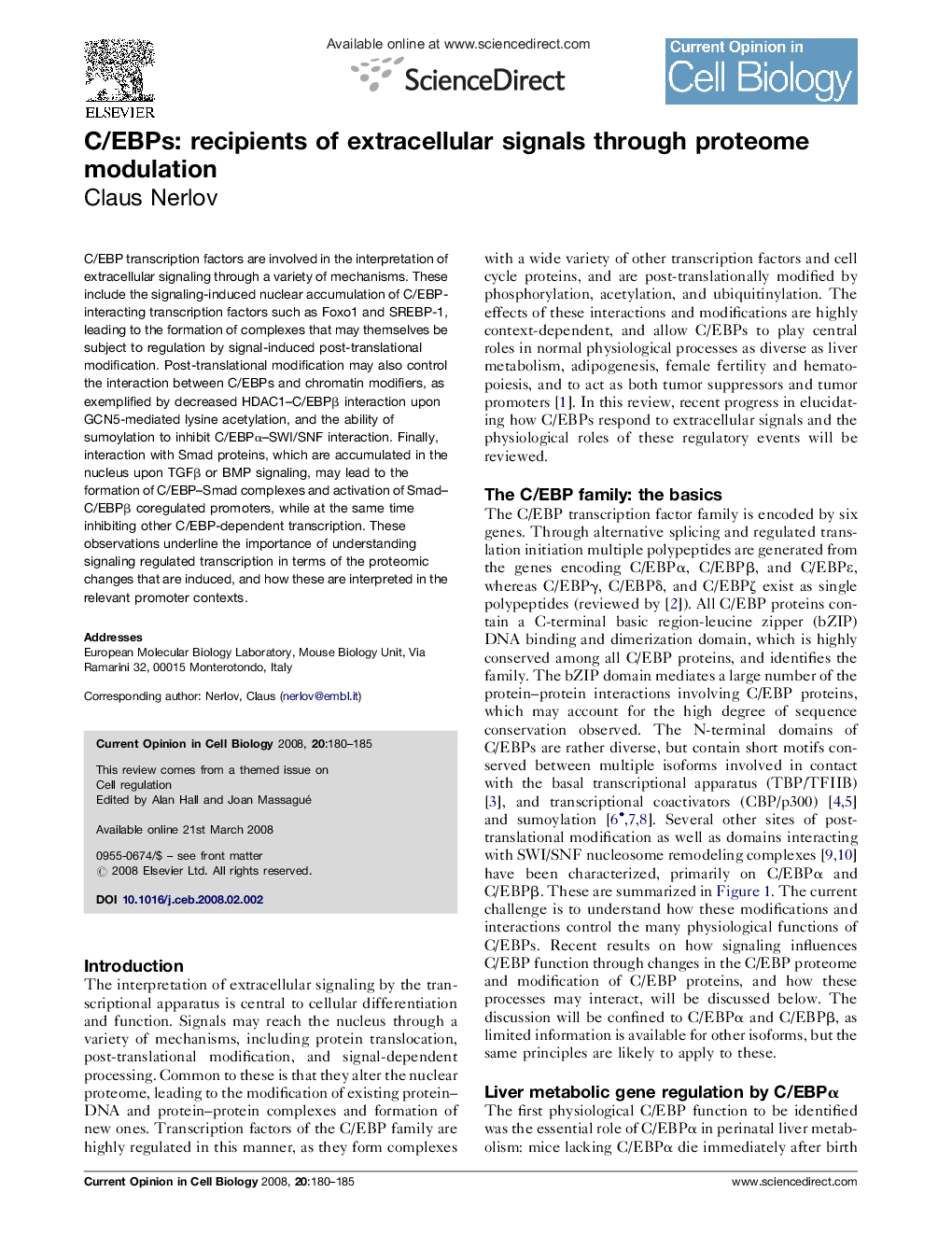| Article ID | Journal | Published Year | Pages | File Type |
|---|---|---|---|---|
| 10929424 | Current Opinion in Cell Biology | 2008 | 6 Pages |
Abstract
C/EBP transcription factors are involved in the interpretation of extracellular signaling through a variety of mechanisms. These include the signaling-induced nuclear accumulation of C/EBP-interacting transcription factors such as Foxo1 and SREBP-1, leading to the formation of complexes that may themselves be subject to regulation by signal-induced post-translational modification. Post-translational modification may also control the interaction between C/EBPs and chromatin modifiers, as exemplified by decreased HDAC1-C/EBPβ interaction upon GCN5-mediated lysine acetylation, and the ability of sumoylation to inhibit C/EBPα-SWI/SNF interaction. Finally, interaction with Smad proteins, which are accumulated in the nucleus upon TGFβ or BMP signaling, may lead to the formation of C/EBP-Smad complexes and activation of Smad-C/EBPβ coregulated promoters, while at the same time inhibiting other C/EBP-dependent transcription. These observations underline the importance of understanding signaling regulated transcription in terms of the proteomic changes that are induced, and how these are interpreted in the relevant promoter contexts.
Related Topics
Life Sciences
Biochemistry, Genetics and Molecular Biology
Cell Biology
Authors
Claus Nerlov,
